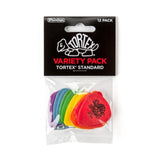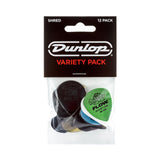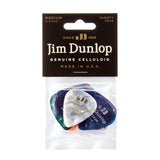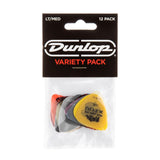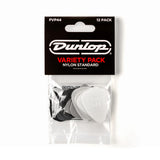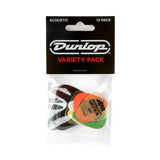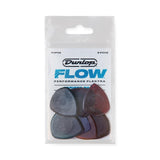Your pickup selector switch is one of those components of your guitar that can fly under the radar. Every guitarist has one, and the vast majority of those guitarists use them, but how do they actually work? In Part 4 of our Guitar Wiring Guide we’re having a deep look into pickup selector switches and toggle switches, and how you can best utilise them in your guitar wiring circuits.
How does a pickup selector switch work?
Put simply, your pickup selector switch controls which pickup sends its output to your amplifier. There are two major components to the selector switch, the blade and the terminals. The signal goes through the path you dictate, depending upon which terminal the blade is currently connected to. Note that on the 5-way switch in the image below (top left) the blade us connected to two terminals at one time.
There are two sides to a pickup selector switch, Side A and Side B with 4 terminals on each side. The terminals labelled 1 to 3 are selectable and 0 is your 'common', or to put it more simply, your output. As a basic example you can connect your neck pickup to A3, then wire A0 to your Volume Pot, giving you output!
Now that we have the basics down lets have a look at how they’re used in the context of your guitar.
5 Way Switch
The 5-way switch is most famous for coming as standard on Stratocasters, but it wasn’t always that way. Originally the Strat had a 3 way-switch, all the way up until the late 70s when they realised players had been catching the switch between two positions to create new sounds. Companies like Seymour Duncan were already creating custom 5-way switches before the big F caught on, and nowadays it’d be strange not to have the infamous ‘quack’ tone on your Strat!
How it’s Wired
Despite having more pickup combinations, the 5-way switch is actually a little easier to wire than the 3-way. This is because there is one terminal for each pickup, which you don't get in a 3-way setup (more of which later). On a 5-way switch the blades can select two terminals at a time, as we can see in the image below when the switch is in Position 2 and Position 4.
Stratocaster Switching
Your pickups are connected to Side A, and thus the position of the switch determines which are activated in the circuit. There are a myriad of ways you can wire a Strat switch, but for now let’s just look at a traditional layout as this is what most of you will be familiar with. Think of Side A of the switch as your input side, and Side B as your output. Also take note of the jumper that connects A0 to B0, activating Side B of the switch.
Switch Side B
With Side B activated you can get a lot more versatility with a 5-way switch, for example you can connect your two tone controls so that one controls the neck and middle pickup, while the other controls the the bridge pickup. This is great for HSS setups, allowing you to use different pot values for each position to maximise your pickup configuration.

3 Way Switch
The 3-way switch was the one of the first designed for the electric guitar, appearing initially on the Broadcaster, precursor to the modern-day Telecaster. There is only one real difference between a 3-way pickup selector and its 5-way bretheren, and that is the size of the blade. With a 3-way switch, you can only select one terminal at a time. This means that we'll need to do a little extra work to get it up and running.
Telecaster Switching
With a Telecaster, switching requires a jumper because of the aforementioned smaller blade. So, we need to jump the connections so that we can get that classic Tele middle sound where both pickups are connected.
How it’s Wired
We begin by wiring the Bridge pickup to A1 and A2. The Neck Pickup goes to both B2 and B3, and there is a jumper between A0 to B0, with B0 being the Master Output. Jumping each pickup between two terminals allows us to get both pickups engaged in Position 2. Check out the diagram below for a visual representation of how this works.
In Conclusion
Did you get all that? This is one of those topics that may take some re-reading and real-life experimentation to get a deeper understanding of but trust us, once you’ve done it a few times it will seem simple! There are lots of ways you can get creative here depending upon the kind of pickup configuration you have, Tone Pot values, and that's not even getting into adding Capacitors and Resistors to the circuit! The only limit is how much you’re willing to explore.
Learn More
Understanding Potentiometers and pot values is crucial to getting the most out of your pickup selector switches.
Add further functionality to your guitar with utilising Resistors in Guitar Circuits.
Learn how Capacitors add extra versatility to your guitar wiring.

















